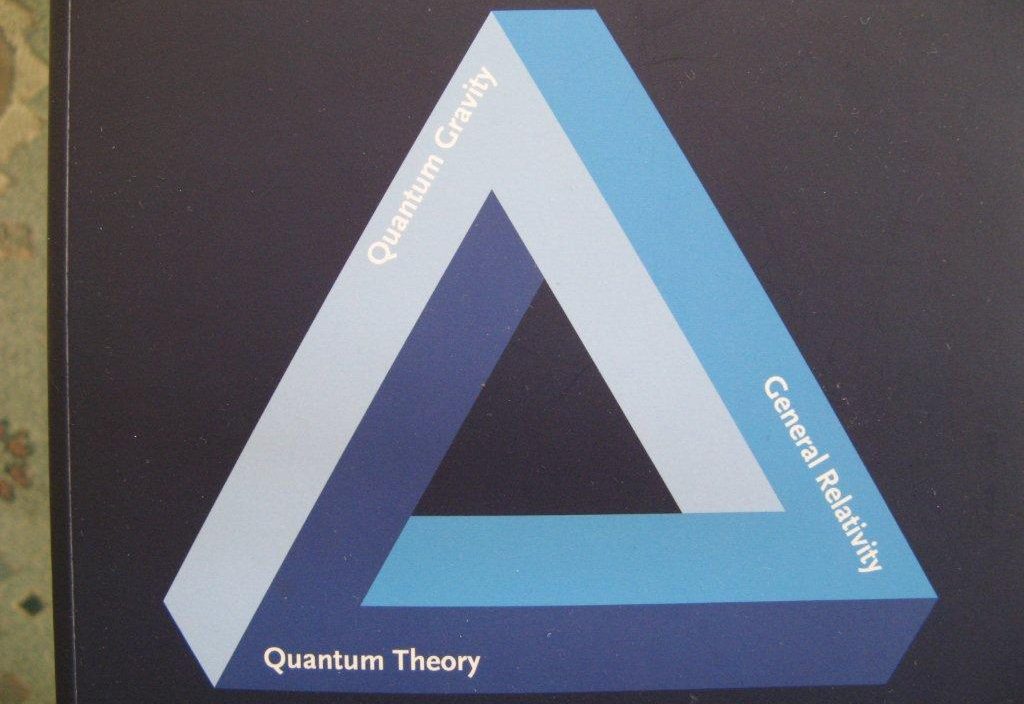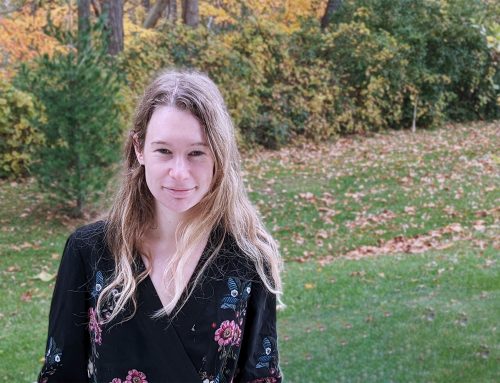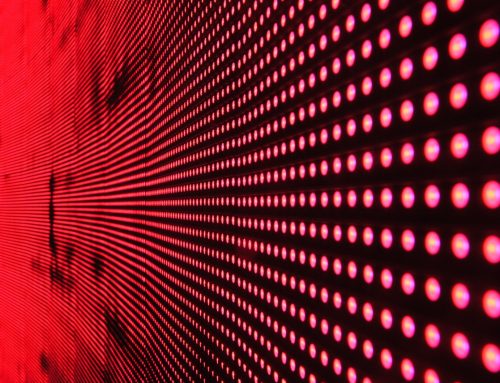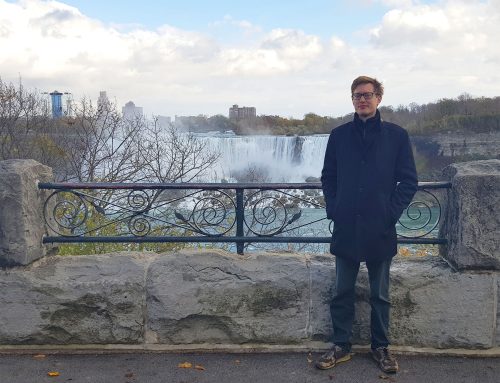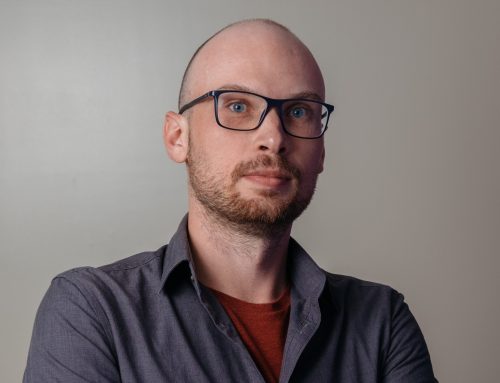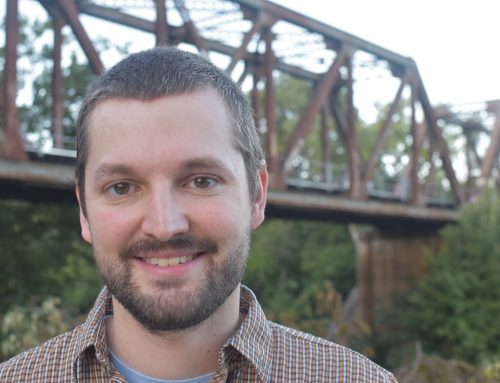Today I sat down with one of the new Rotman postdoctoral fellows, Marc Holman, to chat about his research, his background, and his position here at the Rotman Institute. Dr. Holman has a lot of passion for his work, and it shows through in this interview.
Adam Koberinski: Tell us a little bit about your educational background. What first sparked your interest in physics?
Marc Holman: Curiously enough, when I first came across the natural sciences in high school I wasn’t exactly interested in them. In fact, I seem to have been lead to think at that age that there were many things in life far more important than what the school curriculum had to offer and it wasn’t until I had considerably broadened my horizon after a year of high school in Melbourne, Australia, that my attitude in this regard shifted.
At some point, I then took two courses in physics and chemistry that were specifically geared towards (potential and actual) medicine students and this had something of a snowball effect. I started out with essentially zero knowledge and the more I learned about chemistry and especially physics that year, the more interested I became — and the more interested I became the more I realized that there still was so much yet to be learned.
One particular thing I remember well for instance is being struck about electromagnetic induction and the idea that there are these magnetic field lines everywhere throughout Earth’s atmosphere and even large regions of empty space, by themselves totally imperceptible to the human senses, but in fact always there and detectable. I already thought that the various electromagnetic formulae we were taught to use in calculations were quite elegant, but when we were then told that nearly all these formulae simply followed as consequences from a single underlying set of elegant equations, namely Maxwell’s equations, which also predicted the existence of a whole spectrum of electromagnetic waves, including the ordinary waves of visible light, I felt impelled to understand this better.
Another thing was that the two courses to some extent merged towards the end of the year. In chemistry we were taught that quantum mechanics was at the basis of the entire periodic table of elements – and thus essentially at the basis of modern chemistry – and the text we used even stated the Schrödinger wave equation in full glory (together with the explicit advice not to memorize it). In physics on the other hand, we learnt that the centuries-old debate on the fundamental nature of light (i.e., whether light essentially consisted of waves or particles), after it had seemingly been settled once and for all in favour of the wave theory by the Young interference experiments in the early nineteenth century, still had to be regarded as unsettled after all, following Einstein’s discovery of the photoelectric effect in 1905. According to modern quantum theory, we were told, light behaves like either a wave or a particle, depending on the type of experiment you perform, and this moreover did not pertain just to light, but also to the “particles” of ordinary matter, like electrons. On the other hand, the fundamental equation for quantum theory, as the chemistry textbook stated, was apparently an equation pertaining just to waves, although these waves now seemingly had to be thought of in a rather different way, namely as “probability waves”.
Although there were different contributing factors, in retrospect I think it was mostly in an attempt to better understand these puzzling and mysterious quantum phenomena, that I was led to study theoretical physics in Utrecht.
There, I soon got interested in other topics as well, in particular general relativity, the other central pillar of modern physics, and mathematics and its foundations. I was also fortunate to have Gerard ‘t Hooft as a mentor and with that the opportunity to write a thesis on the production and probable final fate of black holes.
After an interesting intermediate year at the physics department of the Penn State University in State College, US, I then got started on a project in the foundations of quantum field theory with Dennis Dieks and again Gerard ‘t Hooft and this project eventually led to my doctoral dissertation, which is essentially a detailed and critical review of modern physics.
AK: I too remember my interests being sparked by learning how well we could quantify motion and electromagnetic phenomena using only a few short equations. It’s amazing what a short path it can be from uninterested in physics to having a doctorate degree in the foundations of physics!
AK: What brings you to the Rotman Institute?
MH: Well, to start with, it was the specific project in the philosophy of cosmology led by Chris Smeenk, for which a postdoctoral researcher was sought.
Ever since my first year as a physics student I have been very interested in cosmology and its foundations and the project presents me with an ample opportunity to focus specifically on that field.
Apart from cosmology I am also still deeply interested in the foundations of quantum theory, amongst other things, and in this regard I would hope to benefit from discussions with current members of the Rotman Institute that have similar interests.
AK: There is a lot of buzz at the Rotman Institute surrounding the cosmology project. We will be hosting a conference on the philosophy of cosmology some time in 2017.
AK: Describe some of your current research. What are your main research goals here at Western?
MH: One of the things I hope to achieve while at Western, apart of course from satisfactory fulfillment of my regular postdoctoral duties, would be a publication of my dissertation. Several academic publishers have expressed their interest in publishing a somewhat trimmed down version of the manuscript and so I essentially need to sit down and thoroughly go through the entire text once again in order to do the required editing.
As far as current research is concerned, I am working on assessments of both the so-called flatness problem within the cosmological concordance model in particular and the so-called naturalness problems appearing in modern physical theory more generally.
For instance, in its most frequently encountered version, the cosmological flatness problem states that given that the parameter OMEGA (which can be interpreted essentially as a measure of flatness, i.e., Euclidean geometry) is sufficiently close to the value corresponding to exact flatness (i.e. unity, at the present time) it had to be extraordinarily fine-tuned in the very early universe. It had to equal unity to some fifty decimal places (the exact amount of presumed fine-tuning depends on what time is taken to be the initial time plus further assumptions, but the stated figure seems to be typical). However, as already pointed out on several occasions by different researchers over the past decades, this argument is simply wrong, since OMEGA is driven to unity in the remote past for all relevant cosmological models within this context and so the “fine-tuning” is simply an intrinsic feature of these models. As it turns out, there are also other versions of the flatness problem that can be found in the literature and I am intending to write up the presentation I gave on this subject at the Fourth Spacetime Conference in Varna, Bulgaria, earlier this year.
Finally, I am also working on a new article on the foundations of quantum gravity which I hope will complement an earlier approach I presented in this regard a few years ago.
AK: You have a lot going on in your time here. We all look forward to following your work!
AK: What has been most surprising about living in London?
MH: I guess that would be the amount of flora and fauna one can find here within the actual city confines, which is quite enjoyable.
AK: London does have a great selection of parks and wooded areas right in the heart of the city. I would say it’s my favourite part of the city.
AK: Tell us the most interesting fact about you.
MH: I’ve probably talked enough, so I think I will leave this one for the audience to decide.
Well, what do you think? I hope you all enjoyed getting to know Dr. Holman as much as I did!
Pictured above: A photo taken just before Marc Holman’s dissertation defense.
A close up of the cover page of his dissertation is shown below.
